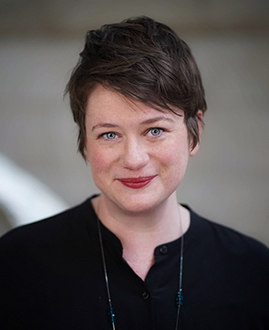How to Focus Your Creative Energy
By Celia Willis
March 2022
Creation, the underlying “why” that drives humans forward, flows throughout a communicator’s unique skill set. Studies show that our creative “Aha!” moments trigger the brain’s pleasure center, which means a successful brainstorm could be the most rewarding part of the day.
Communicators don’t just enjoy creativity — it is part of their actual job description. Daily, we take concepts and realize them into existence, crafting an idea into words so others can connect with it and with us.
Plato claimed, “Our need will be the real creator.” Over millennia, this phrase gradually reformed into the well-known adage “Necessity is the mother of invention.”
But how do you decide which need is the most important? Which challenge do you focus on solving first? On any given day, leaders are faced with an endless list of problems to solve and responsibilities to manage, ranging from completing paperwork to developing a vision for the next year. It can be especially difficult to prioritize innovation and create time for ideation with so many other tasks and deadlines vying for your attention.
However, effectively prioritizing tasks and identifying the most pressing needs — the ones that may require some creative thinking and innovation — not only helps your team and the business but also will leave you feeling more satisfied as an individual.
Here are some ways leaders and professional communicators can prioritize needs to help focus creative energy:
- Start with the business. Identify priorities that are most aligned with the organization’s strategic priorities, goals and vision.
- Laser focus on impact. Every organization has those essential areas that every employee touches and truly drive the business. That is where innovation is going to be felt, and it’s where it would be most appreciated.
- Consider your audience. Who are you trying to reach and what are they most focused on? Whether it’s organizational leaders, employees, customers or other stakeholders, start with understanding what your audience needs.
- Don’t recreate the wheel. Before you dive headfirst into developing a new solution, identify what’s working well already. Is there a way to apply that success elsewhere?
- Clearly identify desired outcomes. If you identify a need to create something new, then make sure that you’ve outlined a clear brief with stated goals. Circulate background and specifics about your intentions before gathering for an innovation session. This will ensure that everyone involved is on the same page and working toward the same outcomes.
Let’s focus in a bit closer on how these tips play out in the workplace.
Identifying opportunities for innovation
I mentioned the importance of aligning creativity with a business’s priorities and vision, as well as looking for high impact areas that will affect key audiences. That begins with identifying the foundational programs in your organization and the influential teams in your company.
You could pick apart every facet of an organization, approach everything with a fine-tooth comb and seek to innovate everywhere. It’s true that there is always room for improvement.
However, if you do that, then you’re likely to run into areas where innovation isn’t going to make much difference, and the difficulty involved won’t be worth it. Innovation for the sake of innovation, or change for the sake of change, is only going to create more problems.
Instead, filter your ideas through the lens of anticipated impact. Identify high-traffic pain points. Spend time with the people directly affected by them and start brainstorming how they could be improved.
In fact, you may find an opportunity to invite teams along — to encourage them to participate in the process. Just as creating and innovating can spark meaning and joy for you, it can do the same for your teams. Share that opportunity to ideate with the rest of your employees and empower them to participate.
Keeping your vision clear
Once you identify where you’d like to innovate in your organization, think long term — imagine 6 months, a year, 5 years down the road. How does your team or organization look different because of this new idea? Envisioning results can serve as a helpful guide.
Just as the company vision and priorities serve as a guide for identifying areas in need of creative ideation, these intended results can guide you through the process. Every decision that you make should be a step toward achieving those intended outcomes.
The more specific and clear your vision is, the easier it will be to guide the process. Don’t stop at something vague like, “We’ll generate more revenue” or “We’ll be more efficient.” Get granular with it and paint a full picture. That will give you lots of small, sharp targets to aim for instead of one large, blurry one.
The overarching thrust of the human experience is exploration and creation. Whether it’s searching for the higher mountain to climb or the next project to take on, the relentless pursuit of the end of the rainbow is in our DNA.
In our exploration, we create new pathways, new solutions to get us where we want to go. Applying focus to our creative process is the key not only to our success but a deeper, more foundational satisfaction overall.



